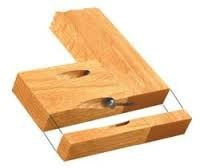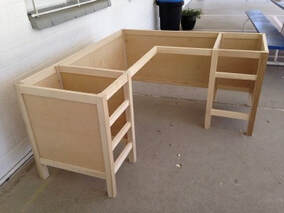 Cabinet joinery can take on many forms. When considering the frame many options exist, some more rigid than others, some faster and some more elegant. All depending on who is making it, whether or not cost is the greatest factor, ease of production, etc will all sort of dictate what is used. The cheapest, fastest, and easiest would be a pocket screw. Cabinets and furniture assembled together as such would tend to be cheaper and quicker. So if cost is the deciding factor, than this is probably what you'll get. It will hold together well enough, but even with glue, end grain doesn't really hold well when glued, so the glue won't be doing much to keep the joint together. All the structure of the joint is in the screw. The next would be dowels. Holes are drilled on either side of the joint to allow dowels to be glued together. In this case, you're relying on the dowels to "bridge" the joint and hold the two sides together with glue. Glue joints tend to be stronger the the wood it's holding together. If you were to glue two pieces of wood together and pull them apart until they failed, chances are that the wood would split before the glue joint failed, meaning that the glue is inherently stronger than the wood itself. However, in this case, though somewhat preferable to the pocket screw, the dowel is the weak link in the chain. But it is the quickest of the glue joint method. Mortise and tenon is by far the strongest and more durable of the connections. It starts by cutting a tenon in one of the boards. This is stronger than the dowel method in that you're relying on the board itself to tie into the other. You cut a corresponding "hole", or mortise in the other board to slide the tenon into. For millennia artisans have used the mortise and tenon joint from furniture making to barn building to create solid connections. Before the advent of modern wood glue tenons would be fastened to mortises by way of a dowel drilled through the mortised board and tenon. With the use of glue in place of the dowel, the joints become as permanent as a single board. Here is a desk built by Matthews Custom Construction using only mortise and tenon joints. No metal fasteners were used in it's construction. If you would like to see how to cut tenons on a table saw, watch our video. The link is provided. youtu.be/42ErjJYE_L0
0 Comments
Leave a Reply. |

 RSS Feed
RSS Feed